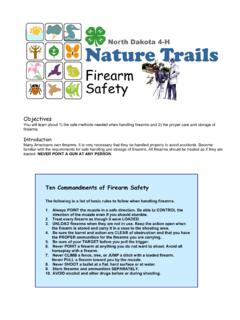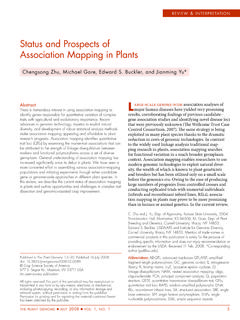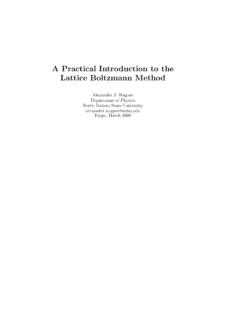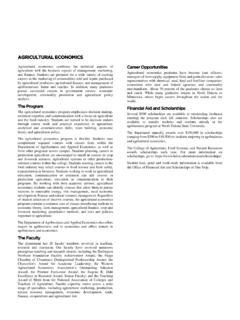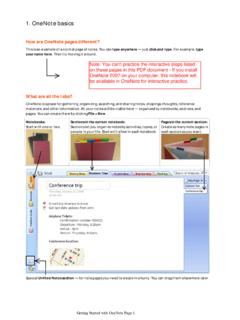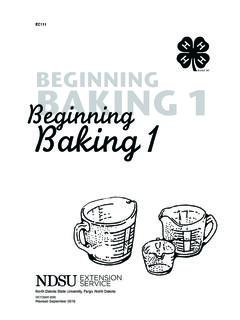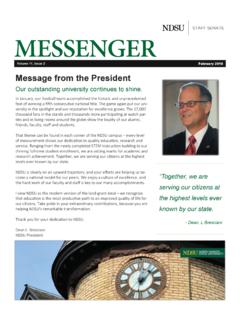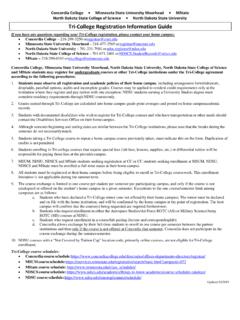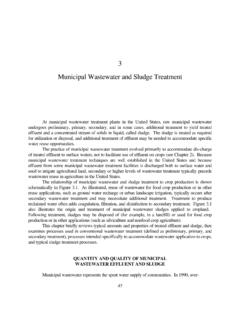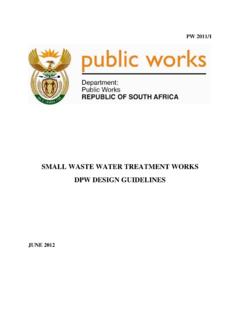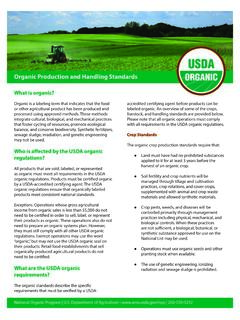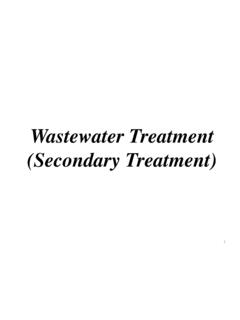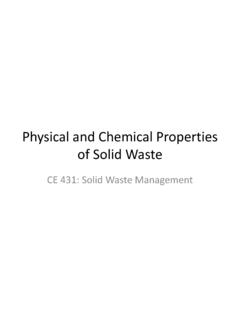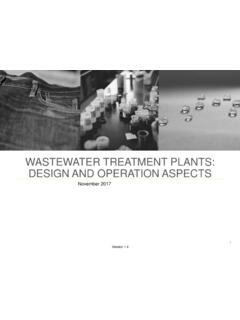Transcription of Autoclave Standard Operating Procedure
1 Autoclave Standard Operating Procedure Purpose: The purpose of this Standard Operating Procedure (SOP) is to ensure that all potentially infectious waste materials, and waste that must be made biologically inactive before disposal, are adequately sterilized when subjected to autoclaving. This SOP will outline procedures for waste collection, treatment by autoclaving, validating Autoclave performance, and a protocol for managing an Autoclave that is not Operating correctly (if a positive biological indicator is generated during testing of performance). Scope: This SOP applies to all autoclaves that are used to decontaminate infectious waste materials and plant (and plant associated) materials that must be made biologically inactive prior to disposal into the normal solid waste stream. Post this SOP in a visible location near autoclaves that are used to decontaminate these types of wastes.
2 Responsibilities: Users: All users are responsible for Operating the Autoclave in accordance with the parameters outlined in this SOP when the Autoclave is being used to decontaminate or inactivate materials. Users are also strongly encouraged to run monthly tests to ensure proper performance of the Autoclave . Department/Facility Supervisors: Responsible for maintaining autoclaves in good working order and having autoclaves tested annually by a qualified technician. The University Police and Safety Office: Providing information on Autoclave testing materials and training and guidance on effective decontamination methods to the campus community. Definitions: Potentially infectious waste , which requires autoclaving, includes the following: biological waste : includes blood and blood products, excretions, exudates, secretions, and other body fluids that cannot be directly discarded into the municipal sewer system, and waste materials saturated with blood or body fluids.
3 Culture and stocks: includes etiologic agents of disease and associated biologicals, including specimen cultures and dishes and devices used to transfer, inoculate and mix cultures, wastes from production of biologicals, and serums and discarded live and attenuated vaccines. Gloves and other disposable personal protective equipment used as barriers when handling biological wastes, cultures, or stocks. Plants, plant associated materials, and plant pests may require autoclaving to render these materials biologically inactive prior to disposal. This is a condition of most APHIS permits. Required materials: 1. Autoclavable bags 2. Solid walled holder for Autoclave bag during waste collection 3. Black plastic bags to dispose of Autoclave bags in once they are decontaminated to send to the landfill (red or orange biohazard bags cannot go to the landfill) 4.
4 Shallow tub or tray to Autoclave bags in (metal preferred, but can be autoclavable plastic: check with manufacturer if unsure) 5. Autoclave indicator (heat-sensitive, lead free Autoclave indicator tape, Chemitest temperature verification strips) 6. biological indicator (commercially available; contains spores; example BT Sure test vials) Procedures: waste Collection: All potentially infectious waste must be collected into a solid walled container marked with the universal biohazard symbol. Non-infectious waste (such as plant material that requires autoclaving) may be collected in bags that are not marked with the biohazard symbol. Do not mix potentially infectious waste with non-infectious waste at any time. Do not overfill your waste container. Prepare the autoclavable bag by cinching, twisting, and securing the bag closed when it is no more than full.
5 Autoclaving: Place bag to be autoclaved into a shallow pan or tub. Affix a small piece of Autoclave indicator tape or test strip to the outside of the bag. Place the pan and bag inside the Autoclave . Do not overload the Autoclave . There should be at least 2 inches of space around each waste bag on all sides to allow access to surfaces by steam. No other materials should be autoclaved together with waste in the same load. Run the Autoclave at a chamber temperature of 121 C for 60 minutes*, using a dry cycle run. *121 C is a Standard temperature for Autoclave operation, and generally achieved when chamber pressure is 15-16 psi. However, this pressure is dependent upon altitude. At higher altitudes, the pressure must be increased to achieve 121 C. It is also important to recognize that the parameters of time and temperature have an inverse relationship.
6 Operation at higher temperatures will allow the time to be decreased, and operation at lower temperatures will require longer times. The 60 minute time specified in the directions is recommended as a starting point, but must be validated by testing as described in the later Validating Autoclave Performance section and adjusted if needed. When the cycle has been completed, verify that the Autoclave chamber and ambient pressure are the same. The chamber may now be opened and the waste bag removed. Wear Autoclave gloves when handling hot items. Also use caution when opening the Autoclave door, as a small amount of hot steam may be released when opening the chamber. Verify that the cycle ran appropriately by visualizing the heat indicator tape or strip. Once the bag has cooled, place the treated waste bag inside a black plastic bag and close the bag either by knotting or with a twist tie.
7 The treated waste may now be discarded as normal solid waste . Please be sure and select the most appropriate cycle for rendering biohazardous materials non-viable for disposal. The above instructions are for solid waste , however if the materials you need to Autoclave are liquid cultures, be sure to use the liquid Autoclave cycle to avoid creating a mess within the Autoclave due to overflow of liquid from the container(s). Always use secondary containment for liquids when autoclaving such as a shallow pan or tub. Validating Autoclave Performance: Each Autoclave must have a functional monitoring or measuring device (electronic or dial) to ensure that the recommended temperature is achieved for the proper length of time on each load. Each waste bag or container decontaminated by autoclaving should have a heat sensitive indicator such as Autoclave tape or strip attached to the outside of the bag.
8 These should be visualized before disposal of each bag and should remain with the bag. At least once a month, autoclaves that are used to decontaminate waste or to render materials biologically inactive should be tested by using a biological indicator, such as endospores from the bacterium Geobacillus stearothermophilus. Testing Procedure : o Secure a biological indicator test containing endospores such as BT Sure (available from The Safety Office at no cost, or from both Fisher Scientific and VWR) o Tie a piece of string to the testing vial containing spores to facilitate retrieval of the vial after the Autoclave run. Add vial containing spores to the bag of waste , burying it within the waste (see Precautions section of this SOP about reducing potential exposures during this step). Leave the other end of the string attached to the vial trailing out of the opening of the waste bag.
9 O Secure the waste bag and start the Autoclave run. o Post autoclaving and once the bag has cooled, retrieve the vial. o For BT Sure indicators: To activate the media, with gloves on hold the indicator in an upright position, gently squeeze to break the glass ampoule. o Follow incubation instructions to complete the test. For the BT Sure vials, this is 55-60 for up to 48 hours. o Read the results of the indicator according to manufacturer instructions. For BT Sure vials this is a color indicator and reads as follows: 1. If after 24 hours the media is yellow this = a failed test (the endospores grew, they were not killed). 2. If after 24 hours the media is still purple = presumptive pass, but continue to incubate until 48 hours. 3. If after 48 hours the media is still purple = passed test (all endospores were killed).
10 4. If spores survived the Autoclave process, growth will lead to fermentation and the production of acid turning the media yellow. o Record date, run parameters, Autoclave tested, and test results (a sample record sheet is included in on page 5 of this SOP). o The Safety Office will supply, incubate, and read the results of the indicator for you if you prefer. If you would like the Safety Office to assist you with validating performance of your Autoclave , follow this protocol: 1. Obtain a biological indicator from the Safety Office by calling 1-7759. Please include the name and the room number you would like the indicator sent to (via campus mail). 2. Run the indicator in a typical waste load. Remove the indicator following the precautions included in this SOP (page 4). Place the indicator in the supplied Ziploc bag.
